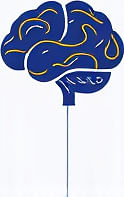Color-Coded Systems for Supporting Autism in Remote Work
 by Marlene Keeling
by Marlene Keeling
Explore how color-coded systems can help adults with autism manage remote work effectively. This approach offers simple tools for organization, reducing overwhelm and boosting productivity while maintaining balance.

Individuals with autism often face unique challenges in remote work environments, where structure and routine play key roles in daily tasks. Color-coded systems provide a straightforward way to bring order to chaos. For example, assigning specific colors to different work categories can make it easier to focus and stay on track.
Why Color-Coded Systems Work Well
Color-coded systems use visual cues to organize information, which can be especially helpful for those with autism. These methods rely on the brain's ability to process colors quickly, turning abstract tasks into tangible ones. In remote settings, where distractions are common, such systems help create a more predictable workspace.
One key advantage is the reduction of cognitive load. By color-coded systems, individuals can quickly identify priorities without needing to read lengthy lists. This approach supports better time management and reduces the stress of switching between tasks.
Practical Hacks for Implementation
To get started, begin with basic tools like folders or digital apps. For instance, use red for urgent emails, blue for project files, and green for personal breaks. This simple setup can transform a cluttered desk or computer into an efficient station.
In remote work, apps like calendar software allow for color assignments to events. Set up your day so that work meetings appear in one color and leisure activities in another. This helps maintain boundaries and promotes a healthier routine.
Another hack involves physical spaces. Keep office supplies organized by color on your desk. Pens in one color bin and notebooks in another can make retrieval faster and less frustrating. For adults with ADHD traits alongside autism, these strategies offer extra layers of support.
Tips for Work-Life Balance
Balancing professional and personal life is essential for well-being. Color-coded systems can extend beyond work hours to include family time or self-care. For example, mark evening routines with a specific color to signal the end of the workday.
Lists can be a useful tool here. Create a daily checklist with colored bullets: yellow for work goals and purple for home tasks. This visual separation encourages regular breaks and prevents burnout.
Remember to adjust based on personal preferences. What works for one person might need tweaks for another. Experiment with different shades to find what feels most intuitive.
Real-Life Examples
Consider a scenario where an individual uses color-coded notes during virtual meetings. By highlighting key points in advance with colors, they can follow discussions more easily and contribute without feeling overwhelmed.
In another case, a writer with autism might color-code chapters of a document. This method keeps creative flow intact while ensuring nothing is missed. Such examples show how these systems adapt to various remote roles.
Overcoming Challenges
Sometimes, too many colors can lead to confusion. Start small with just a few options and build from there. Feedback from peers or support groups can provide insights into refining your system.
If sensory sensitivities are an issue, choose softer or muted tones. The goal is to create an environment that feels supportive rather than demanding.
Building Long-Term Habits
Over time, these systems become second nature. Regular reviews help maintain effectiveness, ensuring they evolve with changing needs. For those new to remote work, starting with color-coded systems can build confidence and foster independence.
In conclusion, embracing color-coded methods offers practical ways to enhance productivity and balance for adults with autism. By integrating these into daily routines, individuals can find greater control and satisfaction in their work lives.
